Barthélémy Toguo: Galerie Samuel Lallouz
by Vanessa Gravenor
Barthélémy Toguo’s Africa, currently on view at Galerie Samuel Lallouz in Montréal, plays with the notion of black travel and black exchange in the global market. Through his practice, and poignantly in this exhibition, Toguo mixes Arte Povera actions with African folk aesthetics to suggest the mobility of bodies across different times and space.
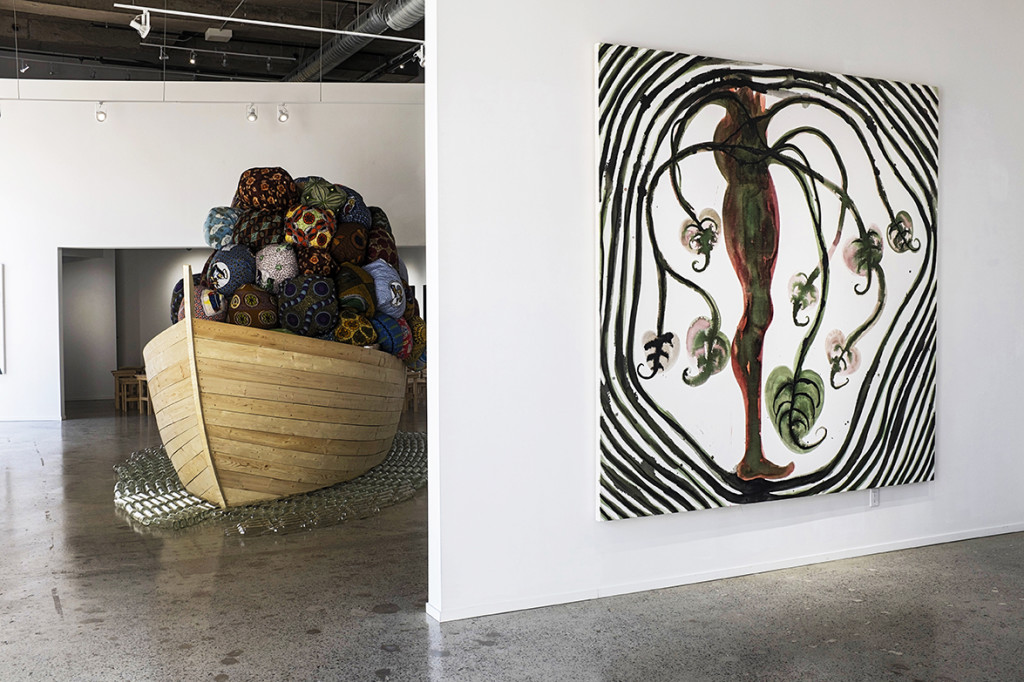
Born in Bandjoun, Cameroon, Toguo studied art at L’École des Beaux-Arts d’Abidjan, Ecole Supérieure d’Art in Grenoble, and Kunst Akademie of Dusseldorf. His practice is similarly global—living between New York City, Paris, and Cameroon, Toguo incessantly encounters the difficulties of his mobility within the political climate that advocates a “war on terror—a constant bureaucratic process as outlined through an accompanying video in the show. To leave his home of Africa, he would move from visa to visa, encountering different official stamps of approval for passage. The difficulty in leaving is obviously a stark irony from the enslaved black body that was seized from homelands and exchanged without documentation overseas. This double circumstance is explored in Stranger in the Night; in this work, the viewer encounters the black figure in various states of entrapment—a linkage that suggests a certain type of othered language that citizens of a colonized land must inevitably live in.
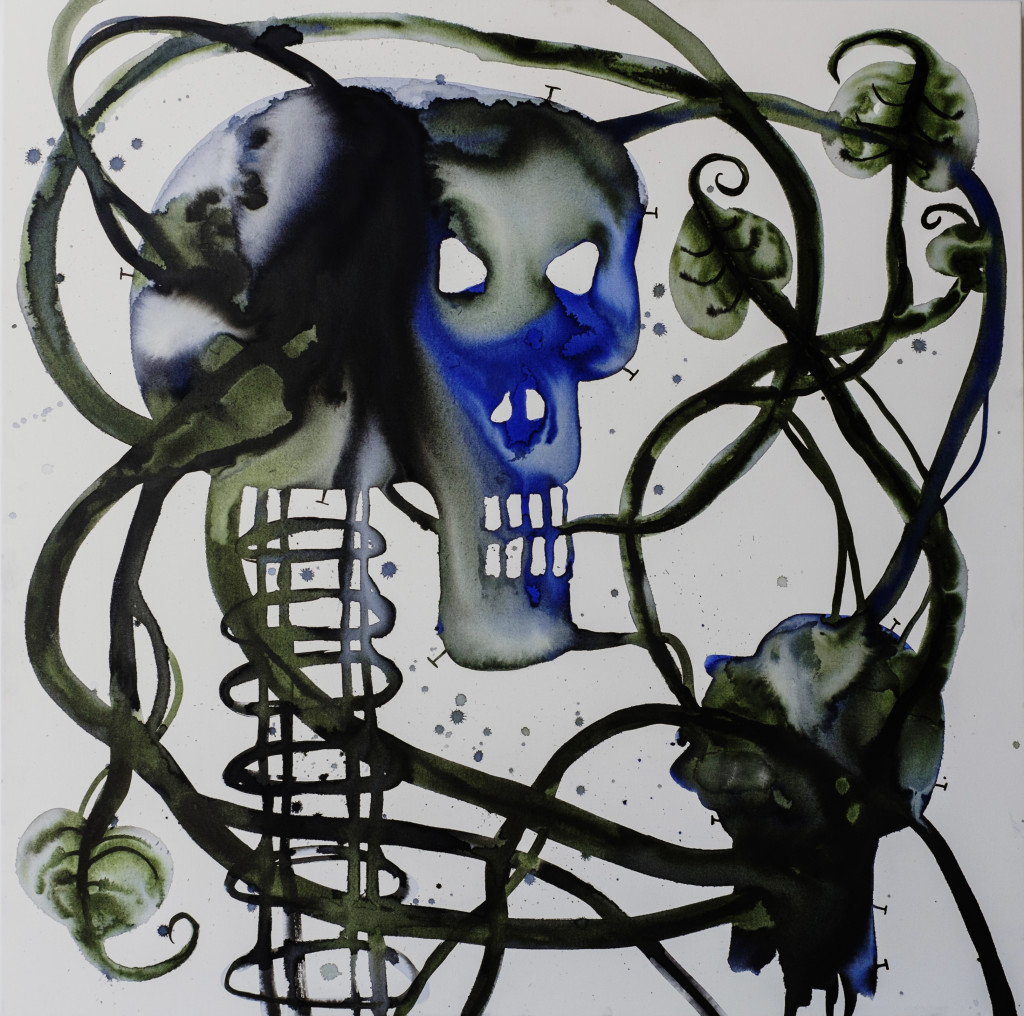
This paradox of mobility was also the impetus for his series The Holy Place, large wood stamps bearing different indentations that make up words that then get stamped on sheets of rice paper. Like much of Toguo’s work, The Holy Place is a multifaceted project that has many implications. The stamps are large, cumbersome, and almost rendered useless by their size. The handles look like heads decapitated from bodies. The stamps stand in as negative female forms, the papers as the positive official stamps of admission. The slogans include odd statements such as “Bring Back Our Girls, Boko Harem CIA, Africa Bitter Destiny Oil Diamonds.”
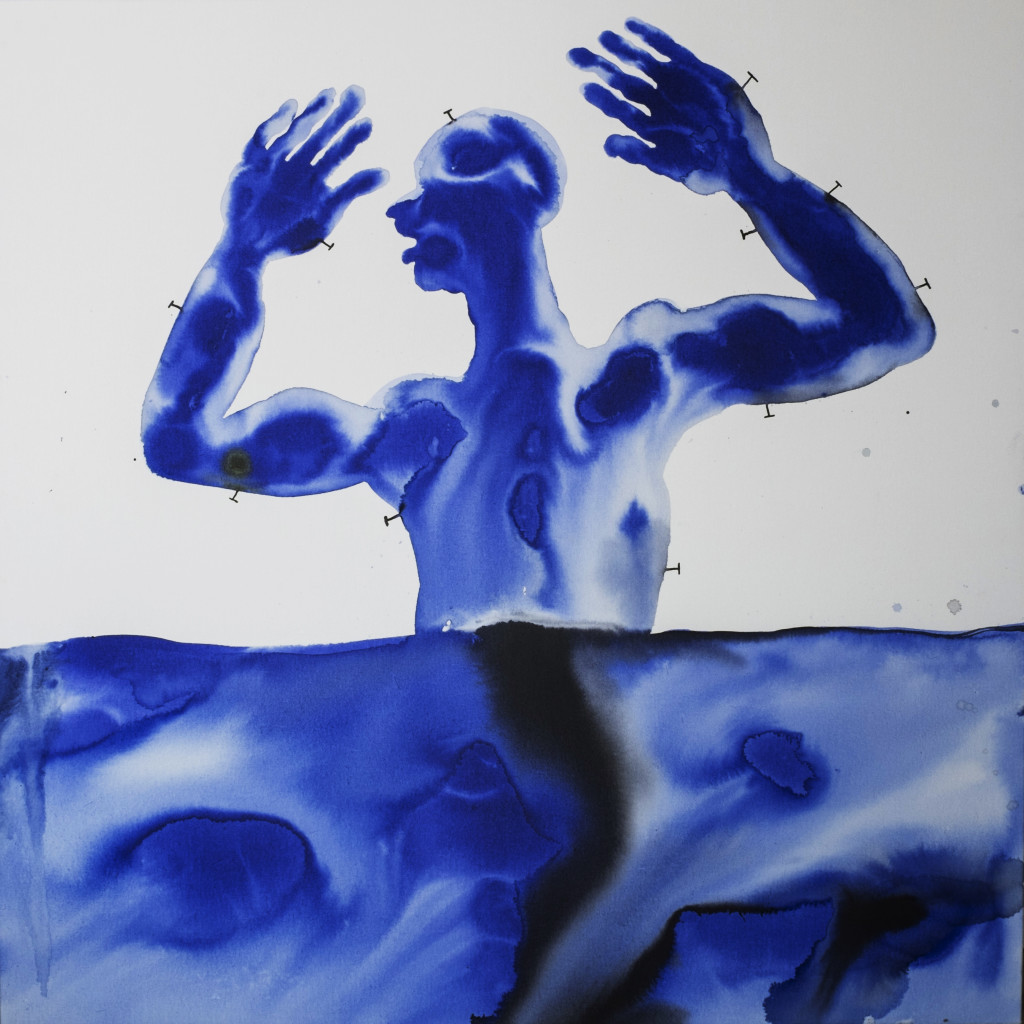
Toguo’s humor is evident even in his amorphous and languid ink drawings. In a drawing titled Je me souviens, a black figure with nails in his body drowns in a sea of ink. “Je me souviens,” translating to “I remember,” is also the slogan on the back of a Quebec license plate—a connection that in the context of the exhibition offers another layer to the theme of commodity exchange and transit. Like “Bring Back Our Girls,” a chant that can only have some communal traumatic origins, Je me souviens contends with the traumatic history of the black body: a history that in the twenty-first century becomes a product for global culture. Susan Sontag has called this experience “the suffering of others,” which for Toguo depicts the suffering of others, particularly the black body, as a spectacle that is all too easily consumed.
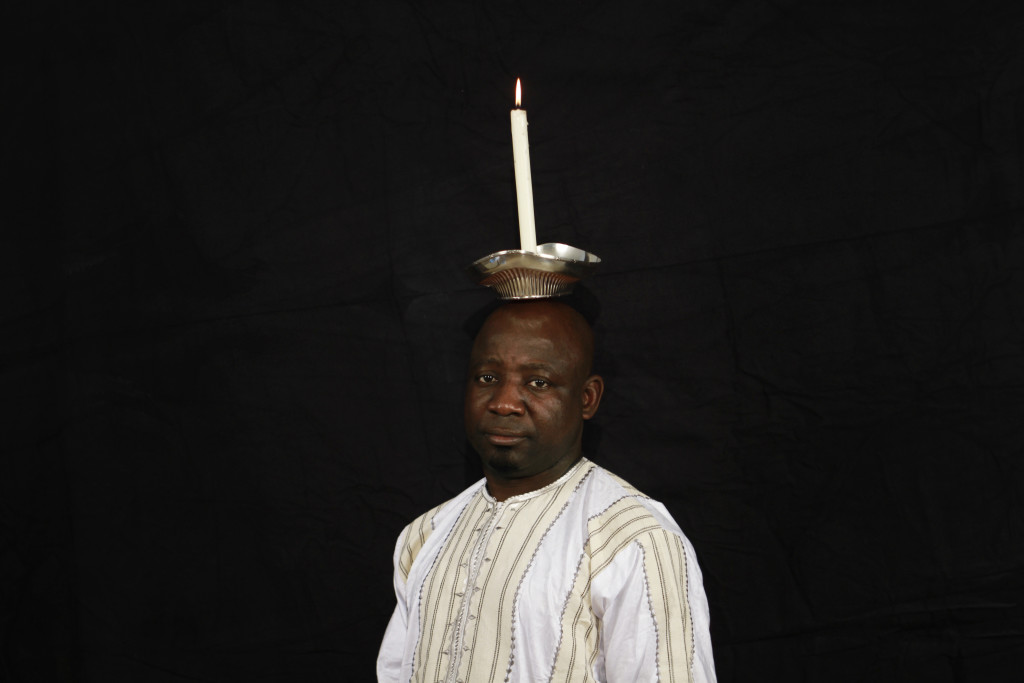
Like Arte Povera, which practiced a type of Artaudian theatre of cruelty—a deadpan humor and dark comedy that alienated viewers from their selves, viewing morality from afar—Toguo’s works also uses play as an activity to engage with black or African identity. In a series of portraits titled Stupid African President, he performs a series of stalk figures that cultivate rebellion, violence, diplomacy, or irony. He looks straight at the camera in many of these photos, his gaze revealing the act he is engaging in.
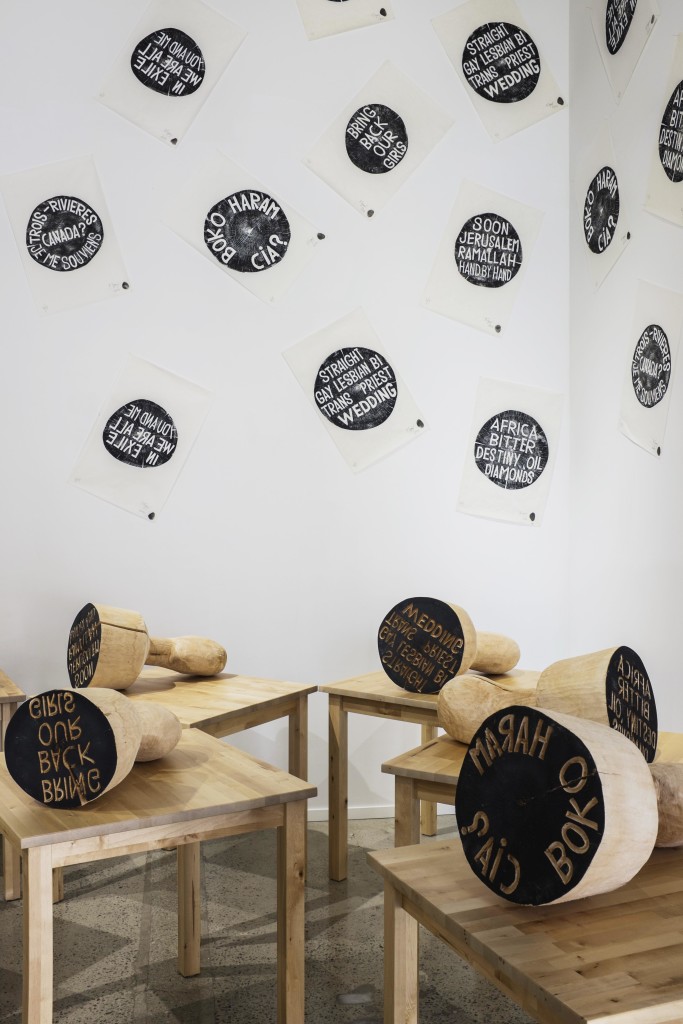
In the exhibition video, Toguo is quoted saying “Il faut d’être un artist qui amène les gens de voire un autre perception de la vie.” This translates roughly in English to mean that to be an artist you must “take” people through a process of seeing that changes perception. This “taking” (amener) can be seen as another form of travel; another way to exchange the other’s gaze as a stifled and entrapped vision that has become all too common place within global culture.
Barthélémy Toguo, Africa, on view at Galerie Samuel Lallouz runs through June 30, 2015.